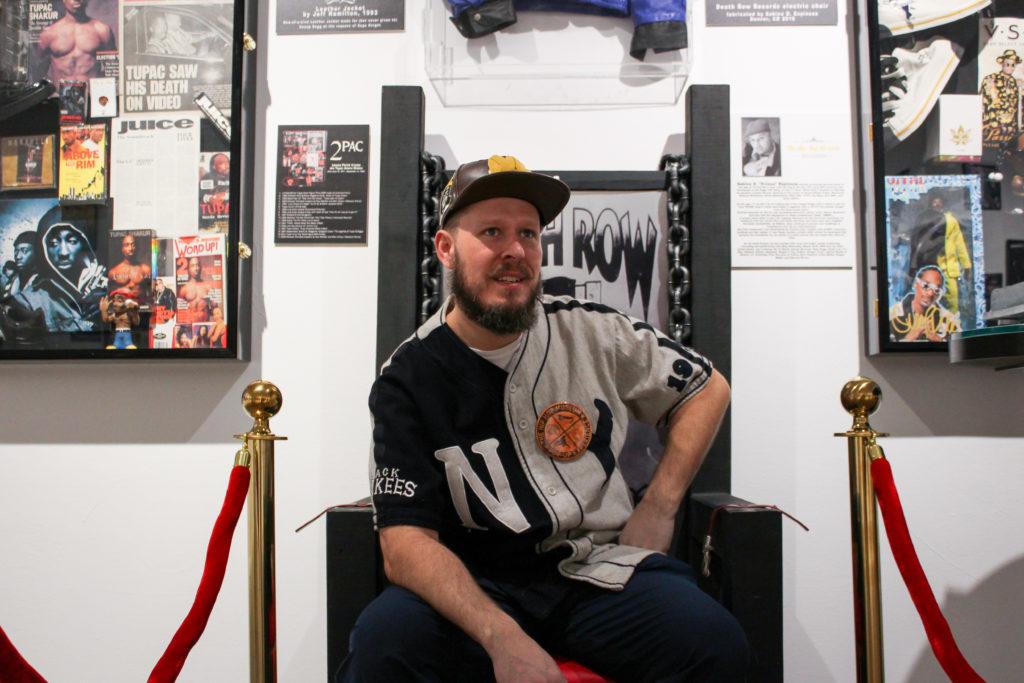When alumnus Jeremy Beaver bought a $12 doll of Biggie Smalls two years ago, he didn’t expect it to sit alongside other hip-hop artifacts in a museum he curated.
After discovering the doll was worth nearly $1,000 online, Beaver was inspired to create a collection to preserve the music and cultural history of hip-hop. Beaver, who graduated with a bachelor’s degree in radio and TV in 1999, opened the Hip-Hop Museum D.C. – a free pop-up museum that will be on display at Culture House at 700 Delaware Ave. SW through Feb. 18.
“I quickly discovered that there is not that much hip hop memorabilia – period – compared to other genres of music,” he said.
After being involved with the music industry for more than 20 years, Beaver said he decided to create the museum when his hip-hop memorabilia collection expanded from a single Biggie Smalls figurine to a wide array of pieces like signed records, hip-hop cassettes and signed painted portraits of rappers in the Wu-Tang Clan.
Beaver joined the music industry as a DJ, but he quickly realized that he couldn’t see himself “scratching records at age 70.” With the mission to “aim higher,” Beaver began to produce music and eventually achieved his dream of opening up his own recording studio, Listen Vision Studios, which has produced records with Jay-Z, the Beastie Boys and Run-D.M.C.
While Beaver said his collection began for his personal satisfaction, he eventually realized it was much more than that.
“This is a cultural, historical legacy,” he said. “I’m trying to create a preservation of music and the culture to make sure that my kids understand the roots and the origins of a unique, original American art form, which is hip-hop.”
Beaver said he is most proud to showcase the world’s largest collections of signed hip-hop microphones and records and a rare promotional copy of well-known rapper Nas’ first-ever single “It Ain’t Hard To Tell” on cassette – which was discovered by Beaver’s 7-year-old son while the two of them were thrifting.
[gwh_image id=”1077216″ credit=”Derek Long | Staff Photographer” align=”none” size=”embedded-img”]Hip-Hop Museum D.C. is a free pop-up museum that will be on display at Culture House at 700 Delaware Ave. SW through Feb. 18. [/gwh_image]
Beaver said he hopes the museum will help “dispel” stereotypes about negative effects of hip-hop culture, especially with a rise of modern artists either advocating drug use or partaking in the “mumble rap” style characterized by a “lack of lyrics, content and meaning.”
“This is why we’re doing this project right here, we really want to get hip-hop back to where it started, which is political activism, having fun, having a party, being positive, uplifting your community, being an entrepreneur, learning a skill or trade,” Beaver said.
Most of all, Beaver said he wants visitors to recognize the layers and origins of hip-hop culture.
“I think even hip-hop fans could be shocked about just how much history and how many stories and lessons as Americans that we’ve learned through hip-hop,” he said. “I want them to realize the legitimacy and staying power of hip-hop.”
At the museum’s launch party on Friday, The Sugarhill Gang – whose 1979 single “Rapper’s Delight” is credited as one of the earliest hip-hop songs – and other iconic hip-hop artists like Grandmaster Caz and Trouble Funk performed, which Beaver said was “surreal.”
“I don’t think it’s registered with me just yet,” he said. “They’re really kind of like my personal heroes that I grew up listening to.”
Through his years producing in the music industry, Beaver and his partner at the museum, Dave Mays, were able to establish contacts that helped them secure “huge names” for the launch party.
“The second we described what we were trying to do and what’s going on, they were all in – everyone was in,” Beaver said. “That was a real feeling because it’s kind of just confirmation that we’re crazy, but we’re not totally crazy. This might be something.”




